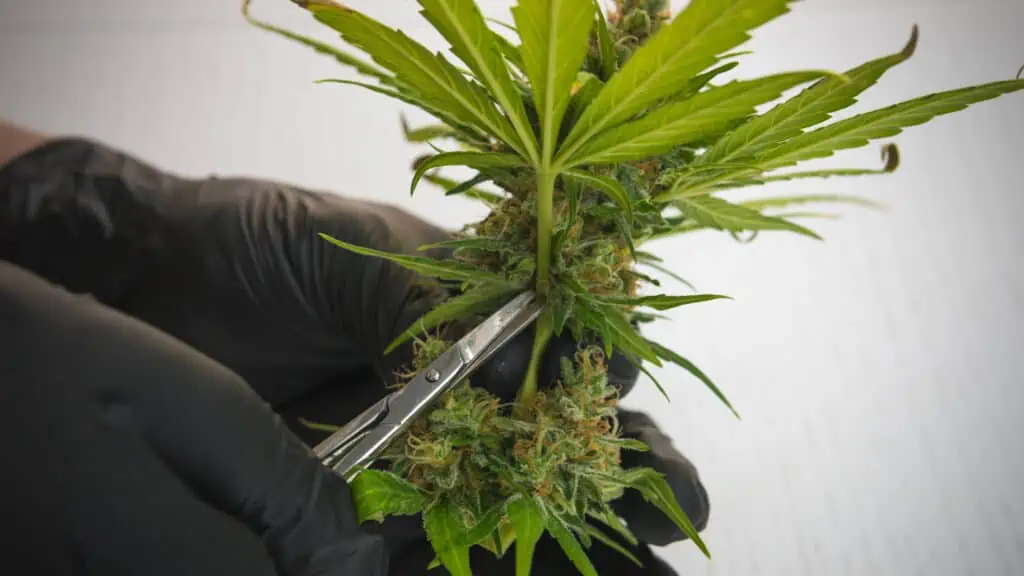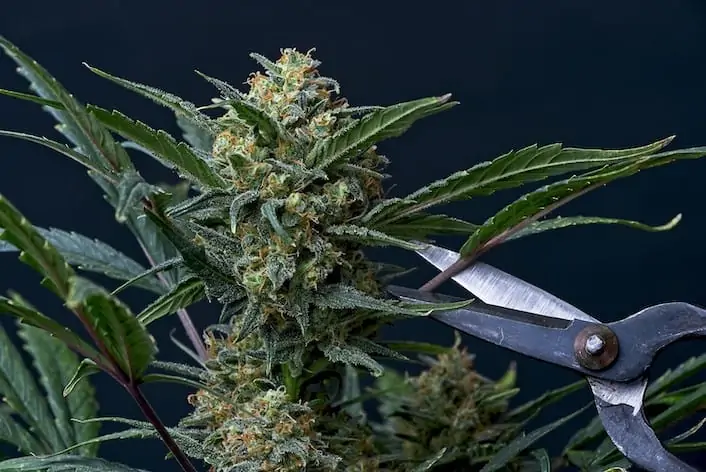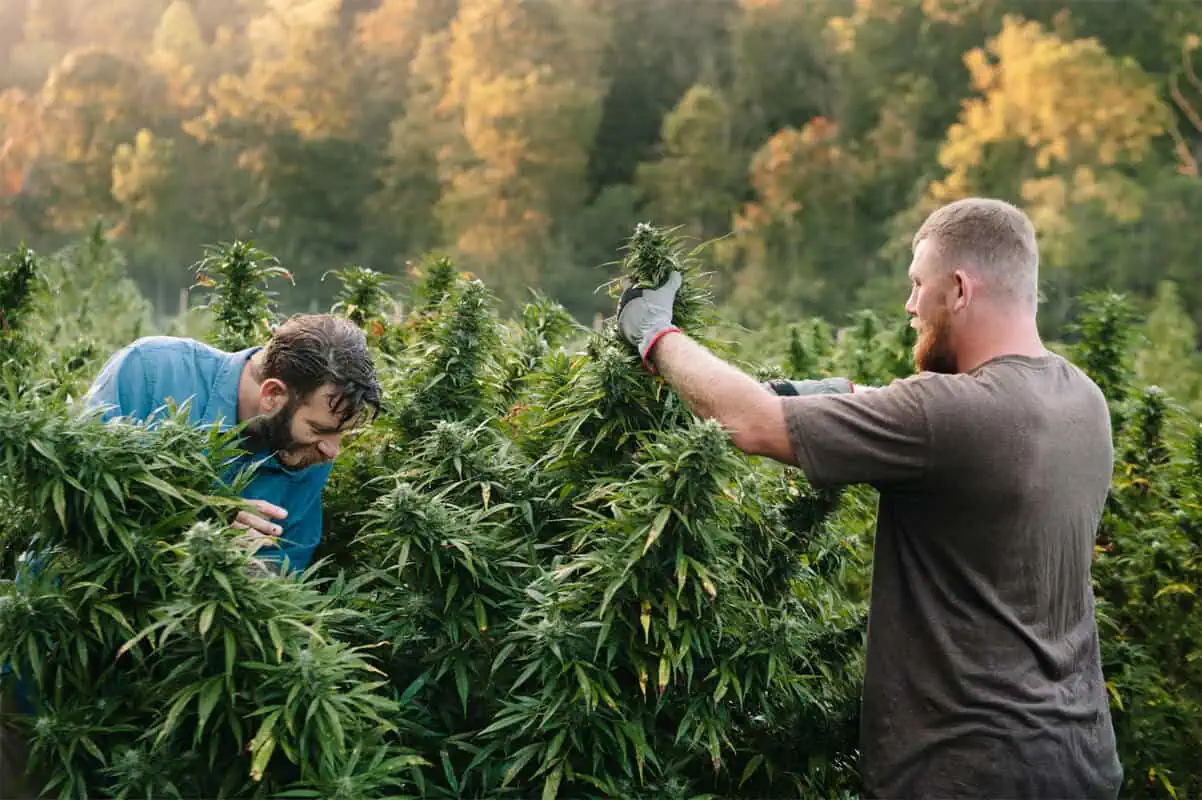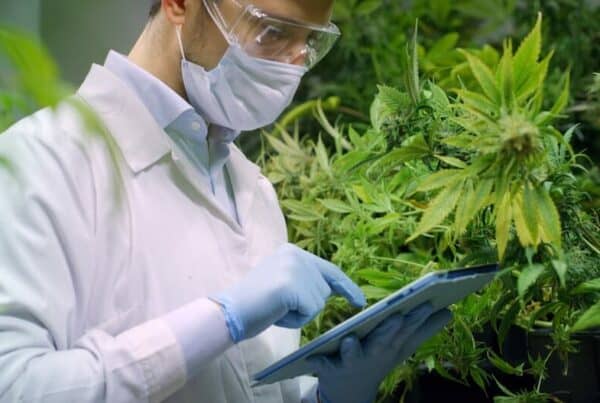TABLE OF CONTENTS
Our guide on how to top a marijuana plant teaches you the essentials of this yield-boosting cannabis training technique. Cutting off the main stem of your plant may seem counterintuitive but it's one of the best ways to create additional bud sites.
If you've mastered the essentials of growing cannabis, it's time to step your game up with this plant training technique.
What Is Topping Marijuana?
Cannabis topping is a type of high-stress training technique (HST) for both indoor and outdoor gardens that involves cutting off the main stem of the plant. Without topping, the cannabis plants will grow vertically and focus all their growth on their main stalk. In the end, you get a one long main cola with smaller stalks around it.
Topping your cannabis plant can make it bushier. Instead of focusing on its vertical growth, it diverts its growth hormones to the smaller stalks surrounding the main stalk. The technique is performed during the vegetative stage of the growth cycle and produces more bud sites compared to no topping.
What Are the Benefits Topping a Marijuana Plant?
If done correctly, topping can have numerous benefits on your indoor or outdoor garden. Who doesn't want more flower buds with tons of trichome growth? While this training technique may seem a bit aggressive, it's an essential practice that can provide a beneficial amount of stress.
Here are some of the many benefits of topping your marijuana plant.
- Can reduce vertical growth, which is especially helpful for height limitations in indoor gardens
- Provides the proper amount of light for developing bud sites below the main cola
- Stimulates horizontal (bushy) growth of smaller side branches
- More colas means a larger yield at harvest
What Are the Drawbacks of Topping Weed?
Topping your marijuana plant has obvious benefits, but not without some risks. Inexperienced growers may cut above the wrong node, create messy cuts, and perform other sloppy techniques. In addition, topping has the following disadvantages:
- Can be stressful for plants
- Require a long recovery time
- Can require a longer vegetative growth stage
- Can produce heavy bud sites that may require support

Fimming vs. Topping
Fimming and topping are both HST techniques used by growers to produce more bud sites, improve light penetration, and harvest huge yields. Both techniques are similar, and often confused, since they involve cutting off a plant’s top growth, but their minor differences are what makes all the difference.
Topping: Involves cutting the plant between nodes
Fimming: Involves removing the top growth without cutting through the stem
The FIM acronym stands for “F*ck I Missed” and refers to the relatively botched method of cutting compared to the topping technique. In the fimming technique, growers pinch the top growth to produce at least a couple of new colas that grow vertically.
When to Top Your Marijuana Plants
Timing is everything when it comes to topping your pot plants. Cut the main stem too soon and you'll leave your slant vulnerable to shock and disease. Cut the main stem too late and you’ve wasted valuable growing time and growth.
Generally, the best time to top your cannabis plants is during the vegetative stage when it's doing most of its foliage growth. Cutting at just the right time can allow it to focus its growth hormones on the side branches instead of its main stalk. After topping, the branches grow horizontally instead of vertical growth from the main stem.
Ideal topping time frame: During the vegetative stage, cut the plant above the fifth node when it has grown six or seven nodes.
Cannabis Topping Equipment
For most cannabis training and pruning techniques, you'll need a sharp and clean pair of pruning blades. Avoid cutting the top stem with a dull blade or by pinching it off with your fingers. Ideally, you want a clean cut to prevent creating a larger plant wound than necessary.
Here are some basic tools to get your weed topping started:
- Clean pruning blades
- A fresh pair of gardening or latex gloves
- Isopropyl alcohol for sanitizing tools
Pro Tip: Use 91% or higher isopropyl alcohol to clean your pruning snips before and after each training session to reduce disease transmission.
How to Top a Marijuana Plant
Now, it's time to get into the step-by-step process of topping your cannabis plant.
- Disinfect the tools you'll be using with isopropyl alcohol.
- Allow your plants to grow a sixth or seventh node during its vegetative stage. This is when it's time to top it.
- It's recommended to cut above either the fourth, fifth, or sixth node. For best results, cut above the fifth node.
- Pay close attention to the plant during the few days afterwards and I'm sure it gets plenty of light and water.
- If you plan on topping cannabis twice, allow it to recover for at least a few weeks after the initial topping.
You may be wondering when to stop topping marijuana plants. In theory, you could continue topping until your plant starts to bloom as long as you give it a couple of weeks to recover between toppings.
How To Top A Marijuana Plant FAQ's
What does it mean to top a marijuana plant?
To top a marijuana plant, you have to cut off the apical meristem, which is the top of the main stem. This is done to stop the plant from growing a single main stem, which is called apical dominance. This makes the plant grow more laterally and make more than one main stem instead. The result is a fuller canopy, which can greatly increase the output.
When is the best time to top a marijuana plant?
Topping a plant is best done when it is in its vegetative stage, which means it has between 4 and 6 nodes, which are the stem points where leaves and branches grow. Before the plant blooms, topping can cause stress, and after the plant has started blooming, topping too late can make it less effective.
How do I top a marijuana plant correctly?
Locate the plant's main stem and the newest growth at the very top.
Using clean, sharp scissors or trimming shears, make a clean cut right above the node where the last full set of leaves comes out. This is generally above the fourth or fifth node from the top.
Ensure the cut is clean to keep the plant from getting stressed or infected.
How often can I top a marijuana plant?
During the vegetative stage, a plant may be topped more than once, based on the grower's goals and the health of the plant. Growers usually wait for the new shoots to get three to four nodes before topping them again. In order to keep the plant from getting stressed, it's best to let it heal and start new growth before topping it again.
What are the benefits of topping marijuana plants?
More main stems mean more groups of buds can grow, which increases the yield.
Better light distribution., a bushier plant with a bigger canopy lets more light reach the lower branches.
Better air flow, mold and pests are less likely to grow in plants with more open structures.
Are there any drawbacks to topping marijuana?
For short periods of time, topping may slow the plant's growth if it is not done properly or at the right time. In order for the plant to recover and grow the extra stems, the vegetative stage needs to last longer, which could make the total growth cycle longer.
“
There are over 300,000 jobs in the cannabis industry. CTU trained me for one of them!

Makes $24.50 @ THC +
Can topping be combined with other training techniques?
It is common to use topping along with other plant training methods such as Low Stress Training (LST), Super Cropping, and SCROG (Screen of Green) to better control plant shape and increase cannabis yields.
Become a Master Grower
Are you ready to take your cannabis garden to the next level? Want to learn more about how to top a marijuana plant and other cannabis training methods?
Cannabis Training University is the most renowned cannabis industry training program in the world. Enroll now in our online cannabis courses to learn cannabis cultivation and perfect the art with an array of cannabis training techniques including:
- Screen of green (SCROG)
- Sea of green (SOG)
- Fimming
- Lollipopping
- Supercropping
Using a range of low- and high-stress training techniques can significantly improve your yields and your buds’ flavor, aroma, and potency. Start your journey to becoming a cannabis master grower by enrolling in CTU today!

Luis Cordova
Luis Cordova is a distinguished author, and renowned expert in cannabis cultivation, who possesses a Master's degree in Plant Biotechnology and Pharmaceutical Science. As a valued contributor to highly esteemed publications such as Cannabis Training University and Maximum Yield Magazine, Luis has emerged as a trusted source of guidance and knowledge in the cannabis industry. Having written thousands of informative articles, Luis is widely recognized for his comprehensive expertise on cultivating cannabis, both indoors and outdoors.












 Jeff was involved in an accident where he endured a traumatic brain injury. He had a week-long stay in ICU where brain surgeons
Jeff was involved in an accident where he endured a traumatic brain injury. He had a week-long stay in ICU where brain surgeons  100% risk free money back guarantee within 48 hours after purchase if student has not completed any of the courses or exams.
100% risk free money back guarantee within 48 hours after purchase if student has not completed any of the courses or exams.